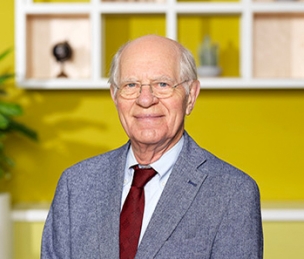Displaying 1 - 14 of 14
-
Friederici, A., & Levelt, W. J. M. (1990). Spatial reference in weightlessness: Perceptual factors and mental representations. Perception and Psychophysics, 47, 253-266.
Abstract
The role of gravity in spatial coordinate assignment and the mental representation of space were studiedin three experiments, varying different perceptual cues systematically: the retinal, the visual background, the vestibular, and proprioceptive information. Verbal descriptions of visually presented arrays were required under different head positions (straight/tilt) and under different gravitational conditions (gravity present/gravity absent). The results of two experiments conducted with 2 subjects who participated in a space flight revealed that subjects are able to adequately assign positions in space in the absence of gravitational information, and that they do this by using their head—retinal coordinates as primary references. This indicates that they cognitively adapted to the perceptually new situation.The findings from a third experiment conducted with a larger group of subjects under a condition in which the gravitational information was present but irrelevant to the task being solved (subjects were in a-horizontal 8upine-position) show that subjects, in general, are flexible in using cues other than gravitational ones as references when the latter cannot serve as a referential system. These findings, together with the observation that consistent spatial assignment is possible evenimmediately after first exposure to the perceptually totally novel situation of weightlessness, seem to suggest that the mental representation of space, onto which given perceptual information is mapped, is independent of a particular percept. -
Levelt, W. J. M. (1990). De connectionistische mode. In P. Van Hoogstraten (
Ed. ), Belofte en werkelijkheid: Sociale wetenschappen en informatisering (pp. 39-68). Lisse: Swets & Zeitlinger. -
Levelt, W. J. M. (1990). Are multilayer feedforward networks effectively turing machines? Psychological Research, 52, 153-157.
-
Levelt, W. J. M. (1990). On learnability, empirical foundations, and naturalness [Commentary on Hanson & Burr]. Behavioral and Brain Sciences, 13(3), 501. doi:10.1017/S0140525X00079887.
-
Levelt, W. J. M. (1990). Some studies of lexical access at the Max Planck Institute for Psycholinguistics. In F. Aarts, & T. Van Els (
Eds. ), Contemporary Dutch linguistics (pp. 131-139). Washington: Georgetown University Press. -
Schriefers, H., Meyer, A. S., & Levelt, W. J. M. (1990). Exploring the time course of lexical access in language production: Picture-word interference studies. Journal of Memory and Language, 29(1), 86-102. doi:10.1016/0749-596X(90)90011-N.
Abstract
According to certain theories of language production, lexical access to a content word consists of two independent and serially ordered stages. In the first, semantically driven stage, so-called lemmas are retrieved, i.e., lexical items that are specified with respect to syntactic and semantic properties, but not with respect to phonological characteristics. In the second stage, the corresponding wordforms, the so-called lexemes, are retrieved. This implies that the access to a content word involves an early stage of exclusively semantic activation and a later stage of exclusively phonological activation. This seriality assumption was tested experimentally, using a picture-word interference paradigm in which the interfering words were presented auditorily. The results show an interference effect of semantically related words on picture naming latencies at an early SOA (− 150 ms), and a facilitatory effect of phonologically related words at later SOAs (0 ms, + 150 ms). On the basis of these results it can be concluded that there is indeed a stage of lexical access to a content word where only its meaning is activated, followed by a stage where only its form is activated. These findings can be seen as empirical support for a two-stage model of lexical access, or, alternatively, as putting constraints on the parameters in a network model of lexical access, such as the model proposed by Dell and Reich. -
Levelt, W. J. M. (1966). Generatieve grammatica en psycholinguïstiek I: Inleiding in de generatieve grammatica. Nederlands Tijdschrift voor de Psychologie en haar Grensgebieden, 21, 317-337.
-
Levelt, W. J. M. (1966). Generatieve grammatica en psycholinguïstiek II. Psycholinguïstisch onderzoek. Nederlands Tijdschrift voor de Psychologie en haar Grensgebieden, 21, 367-400.
-
Levelt, W. J. M., & Plomp, R. (1966). Les dimensions dans la perception des intervalles musicaux. Sciences de l'art, 3, 172-182.
-
Levelt, W. J. M. (1966). The alternation process in binocular rivalry. British Journal of Psychology, 57(3/4), 225-238.
-
Levelt, W. J. M. (1966). Some demonstrations of the complementary functioning of the eyes. Perception & Psychophysics, 1, 39-40.
-
Levelt, W. J. M. (1966). The perceptual conflict in binocular rivalry. In M. A. Bouman (
Ed. ), Studies in perception: Dedicated to M.A. Bouman (pp. 47-60). Soesterberg: Institute for Perception RVO-TNO. -
Levelt, W. J. M., Van de Geer, J. P., & Plomp, R. (1966). Triadic comparisons of musical intervals. British Journal of Mathematical & Statistical Psychology, 19(2), 163-179.
-
Plomp, R., & Levelt, W. J. M. (1966). Perception of tonal consonance. In M. A. Bouman (
Ed. ), Studies in Perception - dedicated to M.A. Bouman (pp. 105-118). Soesterberg: Institute for Perception RVO-TNO.

Share this page